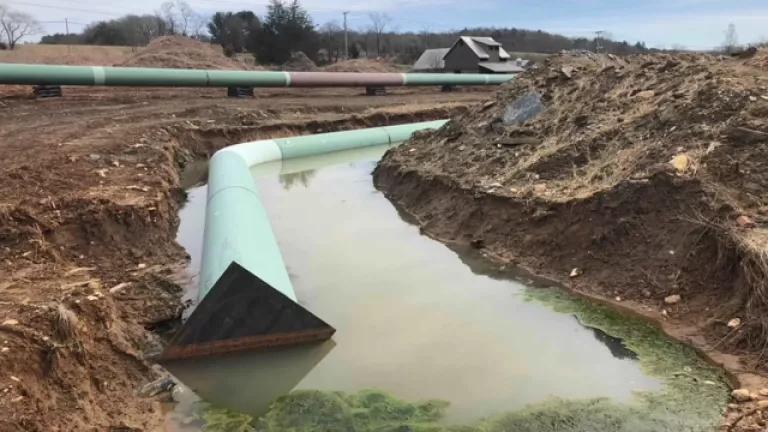Home Run! Appeals Court Upholds EPA Action to Stop Giant, Polluting Mountaintop Removal Mine

A mountaintop removal coal mine
Photo credit: United Mountain Defense
During his confirmation hearing to become the Chief Justice of the Supreme Court, John Roberts famously analogized the role of a judge to that of a baseball umpire, saying:
Umpires don't make the rules; they apply them.
The role of an umpire and a judge is critical. They make sure everybody plays by the rules.
But it is a limited role. Nobody ever went to a ball game to see the umpire.
As a baseball fan, I’m down for just about any such analogy, but as a lawyer, I tend to think that there’s a little more to judging than rote application of rules – indeed, there’s a lot of judgment involved. (Especially when it comes to the balk rule; I’ve been watching this game for about 40 years and I still don’t get it.)
But every so often, a case comes along that is as simple to call as a fastball over the middle of the plate. Such was the case this week, when the U.S. Court of Appeals for the D.C. Circuit ruled that the Environmental Protection Agency has clear authority to “veto” a project that involves dumping dredged or fill material into water bodies. NRDC, represented by attorneys at Earthjustice and Appalachian Mountain Advocates, was one of a group of environmental groups that joined a friend-of-the-court brief in the case.
Recall that EPA vetoed the dumping associated with the monstrous Spruce Mine in West Virginia, a mountaintop removal operation that would’ve buried over six miles of Appalachian streams under waste material, including some of the few remaining high-quality streams in the area. EPA found that the mine would degrade downstream water quality and disturb in excess of 2,200 acres of mountain and forest land, among other things.
Incredibly, a trial court judge ruled that EPA acted unlawfully because it formally vetoed the project after the Army Corps of Engineers had issued a permit for the dumping, even though it had repeatedly expressed concerns about the impacts from the mine. Those of us who work on clean water were astonished, given that the Clean Water Act provides that EPA can act “whenever” it finds that certain unacceptable impacts will occur, and given that the law further says that EPA’s action can include “withdrawal” of site specified to receive dumped material.
This ruling delighted pro-coal members of Congress, who touted it as proof of EPA overreaching to destroy jobs. But less partisan and more thoughtful observers knew better – this was a very straightforward use of clear agency authority. As one legal scholar noted, the “district court’s judgment, on appeal, may well be short-lived.”
And short-lived it was. The appeals court had absolutely no problem finding that EPA’s authority does not expire when the Corps issues a permit. As the court noted:
- The “veto” section of the Act “imposes no temporal limit on the Administrator’s authority to withdraw the Corps’s specification but instead expressly empowers him to prohibit, restrict or withdraw the specification ‘whenever’ he makes a determination that the statutory ‘unacceptable adverse effect’ will result.” STRIKE ONE!
- “This construction is further buttressed by [the provision’s] authorization of a ‘withdrawal’ which, as EPA notes, is ‘a term of retrospective application.’” STRIKE TWO!
I’m hopeful that strike three for this terrible mine proposal will come when the remainder of the case is sent back to the lower court for further proceedings. The remaining question is whether EPA reasonably concluded that the various harms the mine would cause amount to an “unacceptable adverse effect” on certain resources. EPA’s decision is extensively supported by the science on that score.




